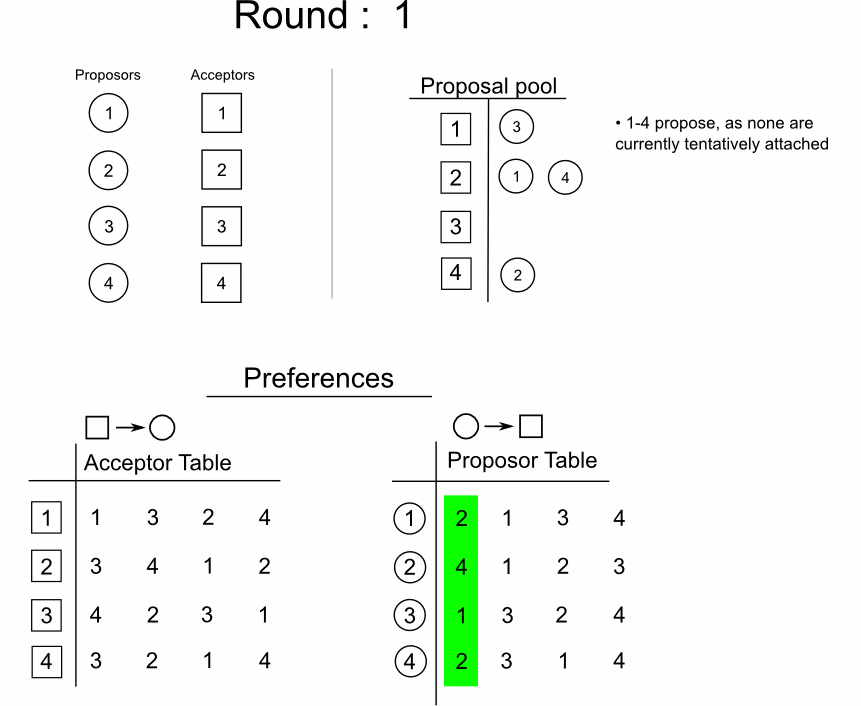‘MeetingofMinds’ will support the ‘matching’ students to supervisors. Such matching systems are already found in dating apps and employment markets. So existing findings on existing ‘matching’ apps can inform the development of the ‘MeetingofMinds’ Social Network.
Matching Sites as Social Networks
Recently it has been found that some dating apps have two different user groups. One group is using these sites as traditional dating apps, but the other group are using them as social networks.
In the case of ‘Hater’ (which is focused on mutual dislikes) about 20 percent of their user traffic is in Global Mode, and those people (mainly younger users) are mostly using the app to just chat.
Another survey of 3500 students using Tinder, found that only four percent said they preferred to meet people using dating apps. A little over 90 percent of these students said they are using Tinder and other apps for purposes (including chat and entertainment) other than making dates.
In designing ‘MeetingofMinds’ we will be mindful of the potential to draw in users who are interested in both ‘matching’ processes and using the app for other purposes, including as a social network.
The Problems Associated with Dating Apps
Although dating apps are widely used and many relationships now start through online contact, users are faced with a number of problems. These include:
- Dating apps can’t predict if people will actually like each other when they meet up.
- Misrepresentation and lack of honesty.
- Mismatches between what different parties were looking for in a relationship.
- Scamming.
- The difficulties of creating long term relationships.
- When making a decision using a long list of possible choices, human are more prone to make bad decisions, because they use less cognitively taxing decision making strategies in such cases. Presentation of options also has a big impact on choice in this type of situation.
- Profiles only offer partial information.
- People are influenced by the dynamics of homophily and attracted to people like themselves. This means that matching formulas don’t tend to work well in practice, and the best that can be hoped for is to be matched in terms of interests.
- Online matching can be very time consuming and anxiety raising, and users often give up or lose interest.
Game Theory and Dating Sites
The type of matching algorithms using profile information which have historically been used by dating site have been evidenced to ineffective in making ‘good’ matches, so it is not suggested that such an approach would be used for MeetingofMinds.
In addition, US data shows that there is a higher percentage of men than women on dating apps, and men are much more active. Bram (2016) identified men were using a strategy of mass messaging in order to improve their chances of making a match. This approach potentially reduced the value given to the message for the woman receiving it, and could lead to women abandoning the app. As the male users of the app could not coordinate with each other, there was be no way they could resolve this problem through collective action.
The ‘MeetingofMinds’ site could potentially fall foul of a similar dynamic, with many more students than academics signing up. Anxious students might end up bombarding academics (particularly those seen to have a high status) through mass messaging. This might lead to ‘log jams’ and to academics pulling out of the site altogether.
Bram (2016) suggests several ways in which this of problem could potentially be tackled, and these approaches could be integrated into the design of ‘MeetingofMinds’.
When first entering the sites, students could be asked to undertake a e-questionnaire to encourage them to think about what they would want most in a supervisor. For example would they give more weighting to spending more time with a supervisor, over finding a supervisor who has high levels of specific expertise in a particular topic are? Rather than using profile information for matching (which dating sites have demonstrated does not work well), the output of a profiling ‘questionnaire’ could be a visual showing the student what they would value most in a supervisor. This could be a useful first step in helping students target their proposals, and decide their supervisor ‘preferences’.
It could be left to academics to decide which proposal to accept, with the student required to invest time in creating a strong online profile and PhD proposal. This could build on the Gale-Shapley algorithm, which seeks to create a ‘stable marriage’ and is an example of Nash equilibrium. This is further discussed below.
The Gale Shapley Algorithm.

Above figure is taken from creative commons image from https://commons.wikimedia.org/wiki/File:Gale-Shapley.gif
Applying Gale Shapley to Meeting of Minds
‘MeetingofMinds’ could limit the number of messages sent to academics each day, or require some sort of ‘payment’ in order to demonstrate the ‘value’ of the message from the students. In the world of the dating app, Bumble has several features that influence users’ behaviour in order to lead more users into real conversations, such as setting deadlines for initial conversations – after which the message is deleted.
The Gale-Shapley (or deferred acceptance) algorithm, has already been used in America to match students to schools. This was adopted because it was found that a disproportionate number of students from low income families were not accepted into a school until very late in the process, and then were not matched to a school on their list of preferences. The previous, simple preference system used had also meant that students choose strategically rather than putting forward their true preferences. This resulted in widespread mistrust in the placement process.
A new system for matching students with schools was then devised which resulted in more student receiving offers from their true preferences, and this has resulted in more honest representation from all parties. This system uses the Gale-Shapley algorithm, and a matching is said to be stable if there is not a student and a school who would prefer to be matched with each other more than their current matches.
It has been showed that when the deferred acceptance algorithm is applied, a student can not gain admittance into a more preferred school by strategically misrepresenting his or her preferences.
If this algorithm is used in ‘MeetingofMinds’ it would result in:
| Step 1: | Every student proposing to the first academic on his/her list of preferences. |
| Every academic conditionally accepting the proposal from the student he/she most prefers out of those who have proposed. They would reject the other proposals. | |
| Step k: | Every student who is not conditionally matched, proposing to the academic he/she most prefers, out of those who have not yet rejected them. |
| Every academic considering any new students who have proposed at this step and any student he/she had previously accepted and accepting the proposal from the student he/she most prefers, even if that means rejecting the student he/she had previously accepted. | |
| End: | This process continues until every academic has accepted a proposal at which time the conditional acceptances become final. |
Conclusion
Evidence on dating apps, questions the effectiveness of complex algorithms (using substantial profiling information) in establishing stable relationship.
We are not intending to use similar type of complex profile based algorithms for the MeetingofMinds. Instead we could consider using game theory (the Gale-Shapley algorithm) to help people go through a process of expressing preferences, until everyone has found a stable match. This could potentially reduce the pressures on actors/nodes that are seen as the ‘most attractive’, and the tendency of this group to become disenchanted with the matching system. There are also a number of other features that increase the value of ‘messages’ sent between nodes.
We also recognise that MeetingofMinds is not just about student to supervisor matches. This might be an initial focus for those signing onto the system and they can use the site to contact other students to discuss their feelings and ideas about finding the right supervisor, But we will also encourage users to engage more widely with the social networking features on the site, and build up a network of contacts at the University. This should improve information flow to young researchers who might otherwise feel isolated, and draw researchers into the site as they start their career, and potentially before they start using other academic social networks.
By Nina Schuller
References
Anderson, R (2016) ‘The Ugly Truth About Online Dating’. Psychology Today. 6 September. Available at https://www.psychologytoday.com/blog/the-mating-game/201609/the-ugly-truth-about-online-dating (Accessed on the 19 March 2018)
Austin, D (2015) The Stable Marriage Problem and School Choice. American Mathematical Society. Available from http://www.ams.org/publicoutreach/feature-column/fc-2015-03 (Accessed on 19 March 2018)
Ball, P (2012) ‘A Nobel for the art of matchmaking’. Nature. 16 October. Available at https://www.nature.com/news/a-nobel-for-the-art-of-matchmaking-1.11607 (Accessed on 19 March 2018)
Bram, U (2016) ‘How Game Theory Improves Dating Apps’. The Economist. 7 November. Available at https://www.1843magazine.com/culture/the-daily/how-game-theory-improves-dating-apps (Accessed on 19 March 2018).
Graff, M (2015) ‘7 Research-Based Reasons Internet Dating Doesn’t Work’. Psychology Today. 21 April. Available at https://www.psychologytoday.com/blog/love-digitally/201504/7-research-based-reasons-internet-dating-doesnt-work (Accessed on 19 March 2018)
Medium (2016) ‘How a matchmaking algorithm saved lives’. University of California. 10 February. Available at https://medium.com/@UofCalifornia/how-a-matchmaking-algorithm-saved-lives-2a65ac448698 (Accessed on 19 March 2018)
Murdoch, C (2017) ‘College kids are taking the ‘dating’ out of ‘dating apps’. MashableUK. 28 March. Available at https://mashable.com/2017/03/28/tinder-college-kids/#nz7ahx3VPmqF (Accessed on 19 March 2018)
Murdoch, C (2017) ‘Are dating apps the new social networks?’ MashableUK. 21 July. Available https://mashable.com/2017/07/21/dating-apps-social-media/#HIBGj1_d4iqk (Accessed on 21 July 2018)
